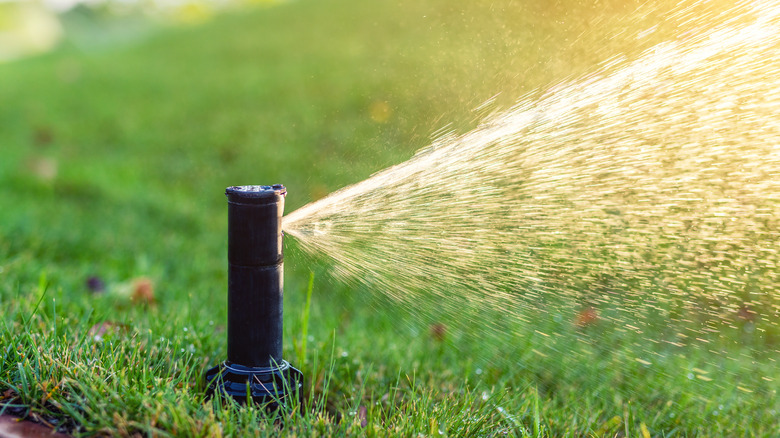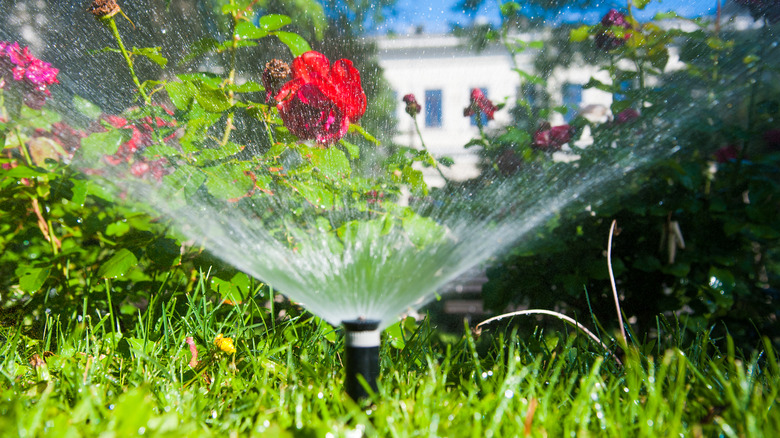Having a beautiful lawn that’s the envy of the neighborhood often means routine watering. The average cost for watering your lawn if you do so daily can range from $50 to $150 per month, which adds up quickly over the year. A smart water sprinkler can keep your lawn looking great while lowering your water bill simply because it offers a more controlled function. In some areas, you may even get a rebate from your water supplier or county if you make the move to a smart sprinkler.
Smart sprinklers can be a valuable addition to a home, but many people see them as a convenience tool. They certainly can make it easier to keep your grass green, especially since you don’t have to stand outside with a hose or remember to set and move the manual sprinkler. They are a set-it-and-forget-it type of tool that works on such a routine basis that no matter how busy you get, you can rest assured that your lawn is hydrated. Yet, there’s a cost involved in installing a smart sprinkler, and there could be additional factors that make having this type a bit more challenging. Before you make the decision to invest in a sprinkler like this, weigh the pros and cons carefully to get a good idea of what it will take to keep your lawn looking its best throughout the year.
How smart sprinklers save money on lawn watering

The benefit of smart watering is that you end up using less water. Because the system can monitor conditions, it only turns on when there’s a need to do so, avoiding all of those instances in which your sprinkler is running just after a rain shower. In fact, the EPA reports that WaterSense-labeled irrigation systems can help homeowners use 15,000 less gallons of water each year.
Smart sprinklers go beyond a timed sprinkler system and instead offer smart features that come with two big improvements. The first is decision-making. Some of the highest-end models work to monitor the soil conditions and weather to make decisions about when to water your lawn and how much to water. You’ll pre-set conditions and goals, and then the system will monitor the conditions and operate when it recognizes that the soil is too dry.
The second benefit of smart sprinklers is that they allow you to control them from an app on your phone. There’s no box in the garage that you need to worry about but rather a programmed, tech-focused design that makes it effortless to monitor your lawn’s condition no matter where you are. This is done through the use of smart sensors placed in various areas of your lawn.
Key factors to keep in mind before installing a smart sprinkler system

When it comes to watering your lawn, a smart sprinkler can help you save money on water usage. That’s good for both your wallet and the environment, since it reduces runoff and erosion risks in some areas. However, like an irrigation system, you’ll need to have the smart sprinkler system installed, and that upfront cost can be a bit high in some areas depending on the type of system, it’s functionality, and the size of your yard.
If you already have an in-ground irrigation system, adding a smart lawn sprinkler to control it could cost about $100 to $300 per controller. If you don’t have a lawn sprinkler system in place yet, you’ll need to have one installed, and that can range from $8,000 up to $18,000 or more. In addition to installation costs, you’ll also need to consider any repairs and maintenance to the system over its lifetime.
For many homeowners, the installation of a smart system, especially if they already have a sprinkler system in place, will help them stop watering unnecessarily. That’s going to lead to money savings in nearly all situations. Yet, it’s always critical to choose the right system, have it professionally installed, and keep up with any maintenance on it to minimize higher repair costs later.



